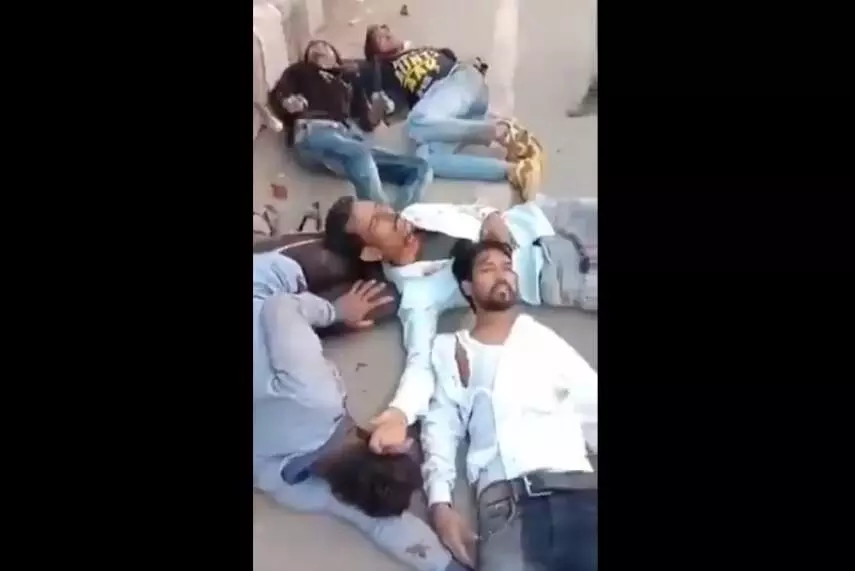
CBI to probe Muslim man’s death after police beating during Delhi riots
text_fieldsThe CBI will probe the death of 23-year-old Muslim Faizan, who was seen in a video being beaten by the police and urged to sing ‘Vande Mataram’ during the 2020 northeast Delhi riots, as directed by the Delhi High Court.
The order came from Justice Anup Jairam Bhambhani, in response to a petition filed by Faizan's mother, Kismatun, seeking a thorough probe into her son's death, The Wire reported.
The incident dates back to February 2020, during the riots that ravaged parts of northeast Delhi. A viral video from that period showed Faizan and other injured individuals being beaten by police officers wielding lathis.
The victims were forced to sing the national anthem and ‘Vande Mataram’ while lying on the ground, clearly in pain. This video sparked outrage and raised serious questions about police conduct during the riots.
Justice Bhambhani, while transferring the case to the CBI, noted the significant delay in the investigation, with no policemen conclusively identified in the four and a half years since the incident. The judge emphasized the gravity of the case, highlighting that it involved gross violations of human rights, potentially driven by religious bigotry, thereby constituting a hate crime.
He criticized the investigation as tardy, sketchy, and conveniently lenient towards the suspects, who were supposed to be law enforcers but appeared to have acted with a bigoted mindset.
Kismatun alleged that her son was brutally assaulted by policemen at Kardampuri and subsequently taken to the Jyoti Nagar Police Station, where he was illegally detained and denied medical attention, leading to his death. Represented by lawyer Vrinda Grover, Kismatun sought the formation of a special investigation team (SIT) and a court-monitored investigation into the incident and the roles of the police officials involved.
Grover argued that the Delhi Police had failed to investigate the involvement of the Station House Officer (SHO) at Jyoti Nagar, where Faizan was detained and assaulted. She also accused the SHO and other officers at Kiri Nagar Police Station of falsifying records, yet being kept out of the investigation by the Delhi Police. Grover insisted that a court-monitored probe was necessary, as the Delhi Police's investigation could drag on indefinitely without delivering justice to Faizan's family.
In response, the Delhi Police claimed that their investigation was ongoing but hindered by the need for forensic examination of certain videos and evidence. They explained that identifying the policemen in the viral video was challenging due to unclear visuals of their faces. Despite these claims, the court expressed its dissatisfaction with the police investigation, pointing out that numerous policemen were visibly involved in the assault on Faizan and others, yet no substantial progress had been made in identifying and holding them accountable.
The high court also questioned the police's actions after Faizan was taken to Jyoti Nagar Police Station from Guru Teg Bahadur Hospital. It was found suspicious that the police claimed Faizan was kept at the station for his safety during the riots, especially when the police were overwhelmed with responsibilities. The court was sceptical of the police's justification that all CCTV cameras at the police station were malfunctioning during the crucial time of Faizan's detention.
Moreover, the court highlighted that the events at the police station, where Faizan was held overnight and into the next day, had not been adequately investigated or acknowledged. This lapse, the court suggested, indicated an attempt by the police to cover up what transpired during Faizan's detention.























